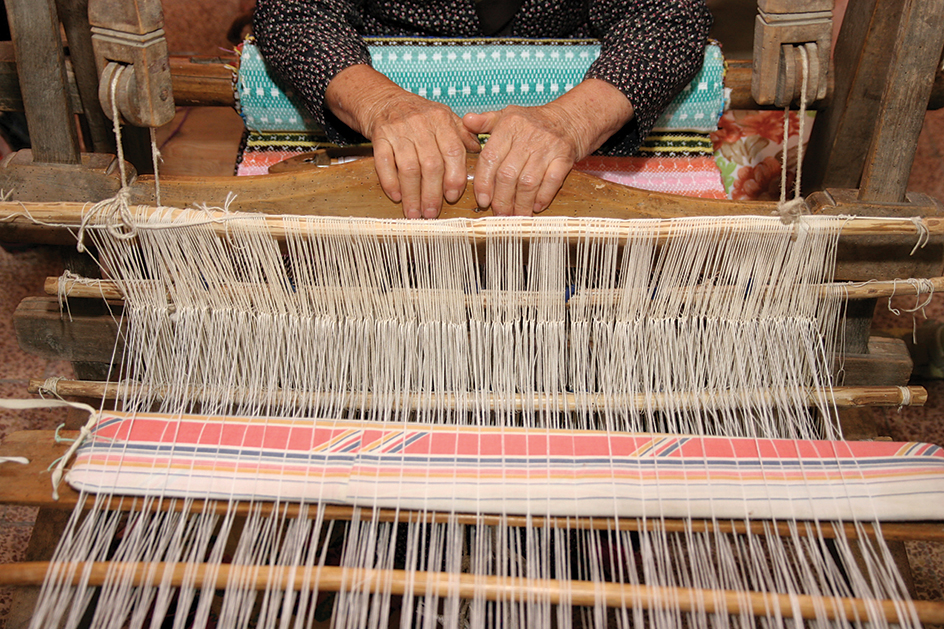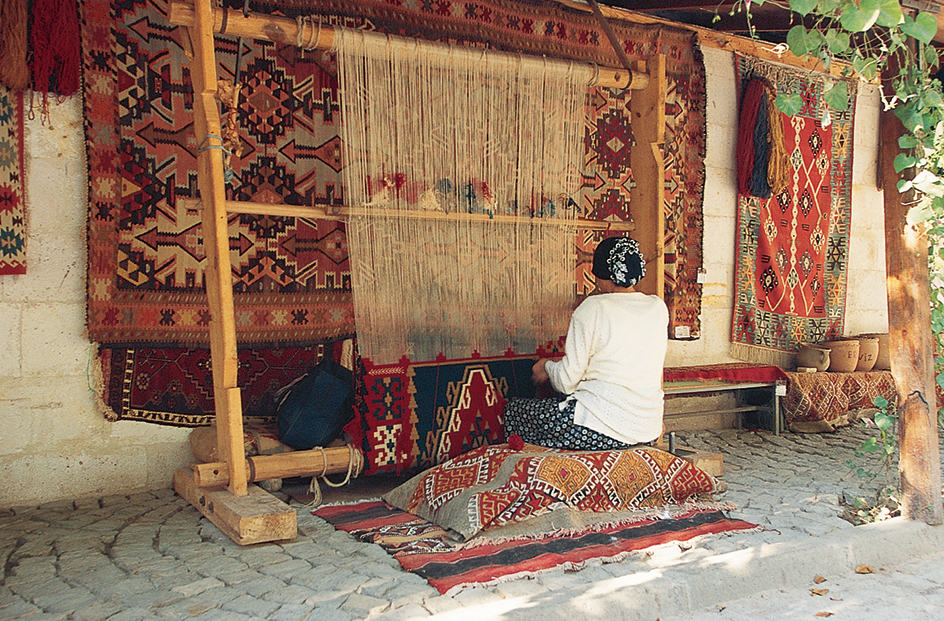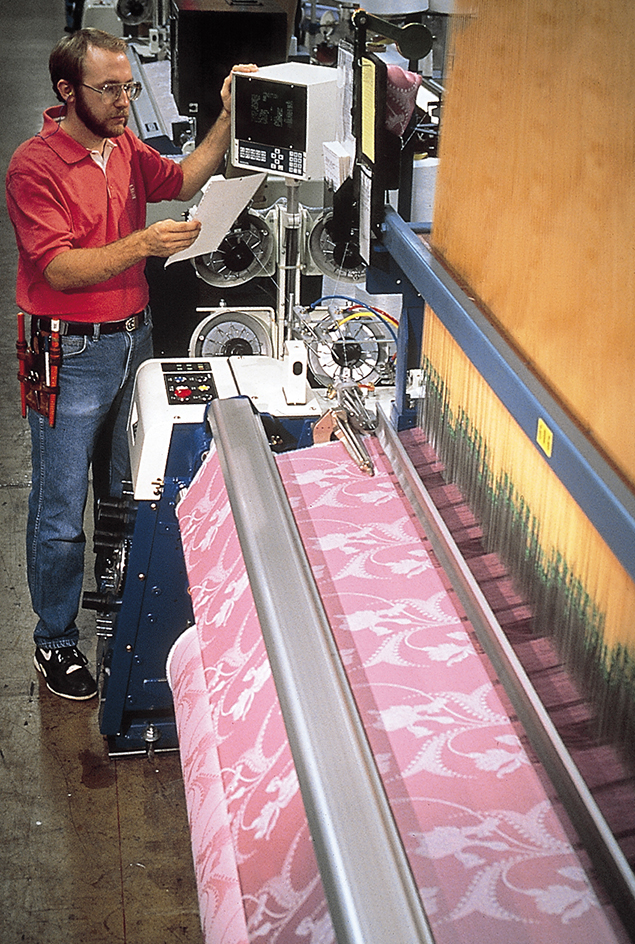Loom is a machine that weaves fabric by interlacing yarns together. A loom holds one set of yarns, called the warp, under tension, and separates those yarns using a shedding device so that another set of yarns, the weft, can pass through the warp at right angles. With a loom, a weaver can create fabric much more quickly than by interworking yarns by hand or with hand tools.
How a loom works.

To weave fabric on a loom, the weaver first stretches the warp yarns onto the loom. The weaver then puts the warp yarns through the shedding device, a bar, frame, or string attached to some of the warp yarns so that the weaver can move them. In order for the woven cloth to hold together, a loom must have at least two shedding devices with different groups of warp yarns attached to each. Finally, the weaver can weave by moving a shedding device to separate the warp yarns, and then passing the weft yarn through them.
Types of looms.

A loom can be as small and simple as a few sticks and some string, or as large as a room and so complex that several highly-trained people are needed to work them. There are several basic types of loom. In a backstrap loom, a strap on one end of the loom wraps around the weaver’s back. The weaver attaches the other end to a solid object such as a tree and leans or sits back to pull the warp taut. Tapestry looms are usually vertical frames with horizontal bars serving as shedding devices. On a treadle loom, the weaver operates a foot pedal to move the shedding device. Drawlooms and Jacquard looms can weave large and complex patterns by moving every warp yarn individually.
History.

The loom was probably invented independently in several parts of the world. They were in use by 8,000 years ago in Mesopotamia and by 4,000 years ago in China and what are now the countries of Mexico and Peru. Loom technology then spread across Asia, Africa, Europe, and the Americas through migration and trade. During the Industrial Revolution , the rapid rise of industrialization that began during the late 1700’s, looms were mechanized to allow for the mass-production of fabrics. Today, such looms create the vast majority of fabric. But individuals still weave using looms for enjoyment, to create art, or for the sake of cultural tradition.
